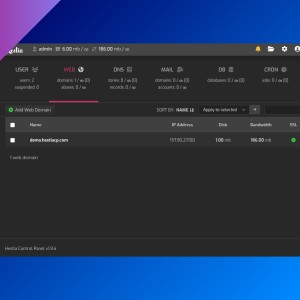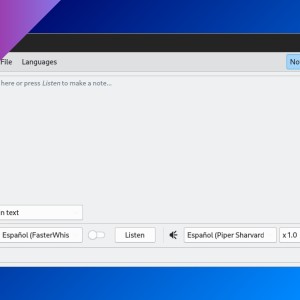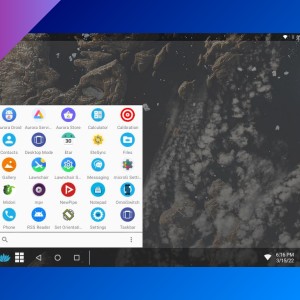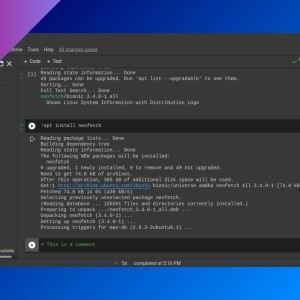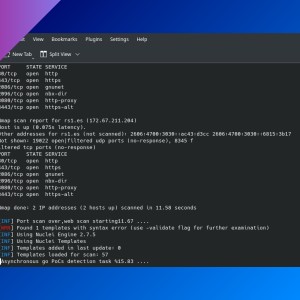Linux essential commands
Table of Contents
- Bash syntax
- Parameters
- Navigate through filesystem and list contents
- Copy, move and delete content
- Create and delete folders
- Processes
- Block devices and filesystems
- Hardware information
- File info
- File creation
- Users
- Permissions
- Network
- Keyboard shortcuts
- More
If you’re new in Linux, these commands will help you to start learning the system, specially the command line.
Bash syntax
Check my post: Bash syntax.
Parameters
A command usually has this structure:
<command_name> <options> <file>In this case, <options> and <file> are parameters. Command options have an option name and an optional (or required) option value. Option names usually start with a single dash (-) when is a one-letter, or two dashes (--) when the option name is a word. Some GNU commands (like tar) allow to specify one-letter option without typing the dash.
When you want to run a command where the <file> parameter starts with a dash, you need to tell to the command that <file> is not an option name. You can do this by typing -- before <file>. In the following example, we are going to create a file called -testfile:
touch -- -testfileNavigate through filesystem and list contents
pwd: show the working directory.cd <path>: change the working directory (cd files/). If you don’t add a<path>, it will change to the “home” directory for the user (runecho $HOMEto see what is your home directory).cd ..: change to the parent folder.cd -: change to the previous working folder.
ls <path>: list files and folders.<path>is optional if you want to list files inside your working directory. Otherwise, you can use relative paths (relative to your working directory, like./folder/,../folder/) or absolute paths (like/home/user/).- You can use wildcards to filter the list:
ls *.png. ls -l: show files and folders permissions.ls -a: include hidden files (files that start with.).ls -lt: order by last modified time,ls -ltu: order by last accessed time.ls --color=auto: colorizes the output.
- You can use wildcards to filter the list:
du <path>: similar tols, list files/directories and their sizes. Unlikels,dushows folder size correctly (as a sum of the sizes of all their files).du -h: use human-readable size format.du --max-depth=<number>: limit the recursive listing to<number>levels.du -a: include files in the list (not only directories).du --apparent-size: print apparent sizes rather than device usage (useful for small files). You can use it with--block-size=1for printing bytes instead of kilobytes.
Copy, move and delete content
cp <source> <target>: copy a file from a<source>to a<target>: For example,cp ./file.txt ./folder/. You can change the filename by typing the new filename in<target>(cp ./file.txt ./folder/file2.txt).cp -r <folder> <target>: copy files and folders recursively. Check the difference when the target folder exists (copies the folder itself an its content) or does not exist (only copies the content).cp --preserve=timestamps <source> <target>: preserve file timestamps. You can also preserve other attributes, by default--preservepreserves mode, ownership, timestamps.
mv <source> <target>: move a file or folder from<source>to<target>. It moves recursively.rm <file>: remove a file.rm -r <folder>: remove files and folders recursively.rm -f <file>: remove a write-protected file (you need to have write permissions on the folder).
Create and delete folders
mkdir <folder>: create a folder.mkdir -p <folder>: create parent folders if they don’t exist.
rmdir <folder>: remove an empty folder.
Processes
<command> &: run a command in the background (more info).pkill <process name>: kill a process by its name.kill <process PID or job number>: kill a process by its PID (Process ID) or job number (prepend ’%’ in this case) It sends SIGTERM signal.kill -s <signal> <PID>: kill a process with a signal (typekill -lfor a signals list). You can also type the signal name (SIGSTOP) or type signal number after a dash (-9).
kill 1234
kill %1
kill -s 15 1234
kill -s SIGTERM 1234
kill -9 1234killall <process name>: kill all instances of a process.ps ax: list running processes owned by any user.ps aux: similar to the above, with more info. Same asps -ef.ps -e -o pid,comm,%mem: customize fields.ps --forest,ps f: display a process tree.
top: similar tops ax, but updates automatically. Most people usehtop(an enhanced version oftop) for this task.which <command name>: find where a command is being run from.free: provides information about physical memory and swap space. By default, displays numbers in kilobytes. Add-mto show numbers in megabytes.echo $0: shows the shell you are using (Bash, zsh, etc.). When using inside a script, displays script path (relative or absolute).pgrep <process name>: find process ID.
Block devices and filesystems
lsblk: list available block devices.lsblk -o <fields>: customize the output by selecting the columns.
lsblk -o name,uuid,labeldf: displays disk usage. Add-hto show disk space in a human-readable format.du: shows the amount of space that is being used by files in a directory. Add-hto show disk usage in a human-readable format. Add-d <number>to specify a maximum depth.
Hardware information
lspci: list PCI devices. Add-vto get more info.lsusb: list USB devices.lscpu: info about CPU.
File info
file <file>: generic information about file type.stat <file>: information about file permissions and date metadata (last accessed, last changed, etc.)stat -c %U <file>: display only the file owner. You can also use%Gfor group and%Ato show only file permissions.
File creation
touch <file>: creates an empty file if<file>does not exist.touch -m -d "2022-01-01 01:00:00" urls.txt: change last modification time.touch -a -d "2022-01-01 01:00:00" urls.txt: change last access time.touch -d "2022-01-02 01:00:00" urls.txt: change modification and access time.
truncate <option> <file>: shrink or extend the size of a file.truncate -s <size> <file>:<size>is an integer, with optional units: B,K,M,G,…truncate -s 0 some_file: empty a file.
fallocate <option> <file>: similar totruncate.fallocate -l <size> <file>
mktemp [<template>]: creates a temporary file or folder and prints their name. If<template>is defined, must include at least three ‘X’ at the end. Those ‘X’ will be replaced by random characters. The file will be created inside the working directory (if a relative path is used). If<template>is not defined,mktempwill create a filetmp.XXXXXXXXXXinside/tmp(or$TMPDIRif set).mktemp -p <DIR> <template>: creates the file inside<DIR>. If<DIR>is not specified, uses$TMPDIRif set, else/tmp.mktemp -d <template>: creates a temporary folder.
Users
- User Management on Linux
who: show who is logged on.
Permissions
Network
wget <url>: download a file.wget -O <filename> <url>: specify a name for downloaded file.wget -P <path> <url>: specify an output directory.wget -i <list file>: specify a file with the URLs (one per line).wget -c <url>: resume a stopped download (if server is compatible).
ip routeorip r: display route table (shows local IP).
Keyboard shortcuts
- Ctrl + L or
clear: clear the terminal. - Ctrl + +: increase the terminal font size.
- Ctrl + -: decrease the terminal font size.
- Ctrl + R: Search through command history. Type a search and press Enter to execute the found command, Ctrl + R to go to next match, or press the right arrow to edit the command. Ctrl + G to quit search.
- Ctrl + A: move to the beginning of the line.
- Ctrl + E: move to the end of the line.
- Ctrl + K: remove text from the current cursor position to the end of the line.
- Ctrl + U: remove text from the current cursor position to the beginning of the line.
- Ctrl + C: stop the current job.
- Ctrl + Z: suspend the current job.
- Alt + .: insert the last argument of the previous command.
!!: repeat the previous command.
$ pacman -Sy
error: you cannot perform this operation unless you are root.
$ sudo !!
sudo pacman -Sy
[sudo] password for ricardo:More
head <file>: show the first 10 lines of a file. You can specify any number of lines with-n <number>.head -n -3: show all except the last 3 lines.
tail <file>: show the last 10 lines of a file. You can specify any number of lines with-n <number>.tail -n +3: show all except the first three lines.tail -f: output appended data as the file grows, useful for viewing log files.
read -p "<prompt>" <variable>: read from user input and assign to a variable.
$ read -p "Confirm (y/n): " res; echo $res
Confirm (y/n): y
yread -n 1 <variable>: accepts only one character for input.man <page>: show a reference manual about a topic (more info).man <section number> <page>: show an specific section (e.g.: you can accesscrontab(5)by typingman 5 crontab)
date: show date and time.date +FORMAT: shows date/time with the specified format: For example,date +%sshows seconds since the Epoch.date -d <date>: display<date>(date -d 20210101,date -d "2 weeks ago").
run-parts <folder>: execute all scripts inside a folder, sequentially.wc [options] <file>: count words, lines, characters of a file.wc -l <file>: count lines. It also displays the filename, to show only the number of lines, run:wc -l < <file>.
watch <command>: execute a program periodically, showing its output fullscreen. By default, the command is run every 2 seconds.watch -n <seconds> <command>: specify the interval.watch -t <command>: turn off the header.watch '<command> | <command>': you can use pipes.
lsof: list open files.lsof <directory>,lsof -p <PID>,lsof -u <users>lsof -i [46][protocol][@hostname|hostaddr][:service|port]: e.g.:lsof -i TCP:https+L1: list open files with links fewer than 1, i.e. removed/unlinked files.+D <directory>: search for any open instances of<directory>and all files and directories it contains.
ldconfig -p | grep <lib name>: find out if<lib name>library is installed.
If you have any suggestion, feel free to contact me via social media or email.
Latest tutorials and articles:
Featured content:

